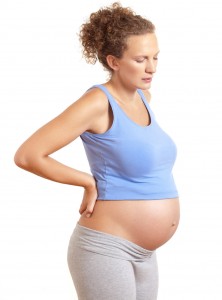 One of the most common presenting complaints in pregnant women is lower back and pelvic pain in one form or another. Research has suggested that lower back pain has been attributed to ligamentous laxity and increase in joint mobility.
One of the most common presenting complaints in pregnant women is lower back and pelvic pain in one form or another. Research has suggested that lower back pain has been attributed to ligamentous laxity and increase in joint mobility.
A women’s posture will change during pregnancy as it adapts for the growing baby. During the third trimester 75% of women will develop an exaggerated lumbar curve. This may place stress on the lumbar joints and the sacroiliac joints. There is a strong link associated with lower back pain and ligamentous structures in a pregnant woman. An increase in the hormone relaxin during pregnancy, may increase laxity (elasticity) leading to instability and stretching of the joint capsules which are rich in pain sensitive fibres.
How Osteopathy may help:
Osteopathic treatment may be of assistance by providing a variety of musculo-skeletal techniques and advice such as:
- Soft tissue and joint mobilisation techniques to improve the mobility and coordination of the hips, lower back and pelvis
- Provide patients with pelvic floor exercises which may help by improving the stability of your pelvis
- Offer ergonomic advice regarding daily activities, to help manage and prevent pain
- Provide patients with safe stretches to do
- Osteopaths can also apply tape to painful regions associated with pregnancy such as the lower back and hip, neck and abdomen. This may offer additional support and improve motion and comfort.
If needed, we refer you on for further care in an integrated approach between practitioners.
We recommend that after the birth of your child, both you and your child come in for a treatment at the clinic. Giving birth can put a lot of stress on you and your baby. Osteopathic treatment after giving birth may help prevent and manage problems like lower back pain, pelvic floor weakness and incontinence.
The birth process may also have a big effect on the baby. Common presentations may include sleeping difficulties, misshapen head, uneven head turn and reflux/wind or feeding problems.
Osteopaths treat a variety of conditions associated with pregnancy and provide care into the post natal period for both mother and baby.
References:
Sandler, S. (2012). Osteopathy and obstetrics. Tunbridge Wells, Kent. Anshan Ltd
Osteopathy Australia. (2014). Pregnancy. Retrieved from http://www.osteopathy.org.au/pages/pregnancy.html

